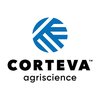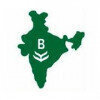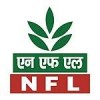Filter interviews by
Dhanuka Agritech State Head Interview Questions, Process, and Tips
Dhanuka Agritech State Head Interview Experiences
1 interview found
I applied via Walk-in and was interviewed before Sep 2020. There were 5 interview rounds.
Interview Questionnaire
5 Questions
- Q1. Market size of north
- Ans.
The market size of North India is significant and diverse.
North India includes states like Uttar Pradesh, Punjab, Haryana, Delhi, etc.
The region has a large population and a growing middle class.
Industries like agriculture, textiles, and tourism are prominent in the region.
The market size varies across different sectors and industries.
For example, the food and beverage industry has a huge market in North India due to t...
- Q2. What is actual consumtion on paddy
- Ans.
The actual consumption of paddy varies depending on various factors such as population, dietary habits, and cultural practices.
Actual consumption of paddy depends on population size and dietary habits.
Cultural practices also play a role in determining paddy consumption.
In some countries, paddy is a staple food and is consumed in large quantities.
In other countries, paddy is not a major part of the diet and is consumed ...
- Q3. What is blue revolution
- Ans.
Blue revolution refers to the sustainable development of fisheries and aquaculture.
It aims to increase fish production and promote sustainable fishing practices.
It includes the development of fish farms, hatcheries, and fish processing industries.
It also focuses on the conservation of aquatic ecosystems and biodiversity.
Examples include the development of shrimp farming in India and the promotion of sustainable fishing
- Q4. What is white revolution
- Ans.
White revolution refers to the increase in milk production through modern dairy farming techniques.
White revolution was initiated in India in 1970 by Dr. Verghese Kurien.
It aimed to increase milk production and make India self-sufficient in milk production.
The revolution was achieved through the establishment of milk cooperatives and the use of modern dairy farming techniques.
As a result of the white revolution, India ...
- Q5. What is grean revolution
- Ans.
Green Revolution refers to the significant increase in agricultural production achieved through the use of high-yielding varieties of seeds, modern irrigation systems, and fertilizers.
Green Revolution started in the 1960s and 1970s in India and other developing countries.
It aimed to increase food production and reduce hunger by introducing new technologies and farming practices.
The use of high-yielding varieties of see...
Interview Preparation Tips
Top trending discussions






Interview questions from similar companies

Interview Preparation Tips

I appeared for an interview in Feb 2025.
(1 Question)
- Q1. Self intro and previous work experience
(1 Question)
- Q1. Salary related and family background

I applied via AmbitionBox and was interviewed in Jun 2022. There were 2 interview rounds.

(3 Questions)
- Q1. Chemical information
- Q2. Give Any five insecticides technical Name
- Ans.
Insecticides are chemicals used to kill or control insects. Here are five technical names of commonly used insecticides.
1. Imidacloprid - a systemic insecticide used to control sucking insects on crops.
2. Permethrin - a broad-spectrum insecticide used to control a wide range of pests.
3. Chlorpyrifos - an organophosphate insecticide used to control insects in agriculture and public health.
4. Cypermethrin - a synthetic p...
- Q3. Give the Pesticides technical name
- Ans.
Pesticides technical names vary depending on the specific pesticide. They are usually complex chemical names.
Pesticides technical names are typically complex chemical names
Examples of pesticides technical names include Glyphosate, Chlorpyrifos, Imidacloprid, and Malathion
Each pesticide has a unique technical name that reflects its chemical composition and structure
Interview Preparation Tips

Deputy Manager Interview Questions & Answers
Coromandel Internationalposted on 17 May 2022
I appeared for an interview before May 2021.
(2 Questions)
- Q1. Tell me about yourself
- Q2. Tell me about your work experience
(1 Question)
- Q1. Tell about safety culture in your current organization
Interview Preparation Tips
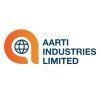
I applied via Referral and was interviewed in Nov 2019. There were 3 interview rounds.
Interview Questionnaire
1 Question
- Q1. Instrumentation safety, selection, SIL, according to Hazardous area classification
Interview Preparation Tips

I applied via Approached by Company and was interviewed in Mar 2023. There were 2 interview rounds.

(5 Questions)
- Q1. How you manage the whole QC team if there is a conflict between them?
- Q2. What are the four level of NABL documentation?
- Ans.
The four levels of NABL documentation are Quality Manual, Quality Procedures, Work Instructions, and Records.
Quality Manual provides an overview of the quality management system.
Quality Procedures outline the processes and steps to be followed for quality assurance.
Work Instructions provide detailed instructions for specific tasks or activities.
Records document the results and evidence of quality control measures taken
- Q3. What do you know about fertiliser?
- Ans.
Fertiliser is a substance added to soil to improve plant growth and yield.
Fertilisers provide essential nutrients like nitrogen, phosphorus, and potassium to plants.
There are different types of fertilisers such as organic, inorganic, and liquid fertilisers.
Overuse of fertilisers can lead to environmental pollution and harm aquatic life.
Fertilisers can be applied in various forms like granules, powders, or liquids.
Prope...
- Q4. What are the type of fertilisers?
- Ans.
Fertilisers are substances added to soil to improve plant growth and yield.
Organic fertilisers: derived from plant or animal sources (e.g. manure, compost)
Inorganic fertilisers: manufactured chemically (e.g. ammonium nitrate, superphosphate)
Liquid fertilisers: dissolved in water for easy application
Slow-release fertilisers: nutrients released gradually over time
Specialised fertilisers: tailored for specific plants or s
- Q5. Are u willing to change ur location if ur husband is working at different place ?
Interview Preparation Tips

I applied via Naukri.com and was interviewed in Nov 2022. There were 4 interview rounds.

(2 Questions)
- Q1. About job profile what you do in current profile
- Q2. Different types of diagram
- Ans.
Diagrams are visual representations of information and data.
Flowchart: used to represent a process or system flow
Gantt chart: used to represent project timelines and schedules
Venn diagram: used to show relationships between different sets
Pie chart: used to show proportions of a whole
Bar graph: used to compare data between different categories
Mind map: used to organize and visualize information
ER diagram: used to repres...
(2 Questions)
- Q1. About six Sigma ,TQM
- Q2. What are TPM ,TQM MTTR ,MTBF
- Ans.
TPM stands for Total Productive Maintenance, TQM stands for Total Quality Management, MTTR stands for Mean Time To Repair, and MTBF stands for Mean Time Between Failures.
TPM is a maintenance strategy aimed at maximizing the productivity of equipment by involving all employees in the maintenance process.
TQM is a management approach focused on continuous improvement of quality in all aspects of an organization.
MTTR is th...
(1 Question)
- Q1. How much do you believe in team
Interview Preparation Tips

I applied via Recruitment Consulltant and was interviewed in Jul 2022. There were 4 interview rounds.

(1 Question)
- Q1. Equipment related questions for maintenance department and utility department
(1 Question)
- Q1. Equipment related engineering and technical questions for maintenance department
(2 Questions)
- Q1. Chemicals handling and basic properties of chemical for safe handling
- Ans.
Chemical handling requires knowledge of basic properties for safe handling.
Chemicals should be stored in appropriate containers and labeled correctly.
Proper ventilation and personal protective equipment should be used when handling chemicals.
Chemicals should be handled with care and caution to prevent accidents or spills.
Basic properties of chemicals such as flammability, toxicity, and reactivity should be understood b...
- Q2. Why you want to join company? What CTC required?
- Ans.
I want to join the company because of its strong reputation and growth opportunities.
I am impressed by the company's strong reputation in the industry.
I believe the company offers great growth opportunities for career advancement.
The company's values and culture align with my own professional goals.
I am excited about the company's innovative products/services.
I have heard positive feedback about the company from curren
Interview Preparation Tips
Vaccum pump, ejector

(1 Question)
- Q1. P2P process Release Strategy SAP MM HANA Steps
Dhanuka Agritech Interview FAQs
Tell us how to improve this page.
Dhanuka Agritech Interviews By Designations
- Dhanuka Agritech Sales Executive Interview Questions
- Dhanuka Agritech Subject Matter Specialist Interview Questions
- Dhanuka Agritech Area Sales Manager Interview Questions
- Dhanuka Agritech Business Development Officer Interview Questions
- Dhanuka Agritech Deputy Manager Interview Questions
- Dhanuka Agritech Purchase Executive Interview Questions
- Dhanuka Agritech Senior Associate Interview Questions
- Dhanuka Agritech Sales Officer Interview Questions
- Show more
Interview Questions for Popular Designations
- State Business Head Interview Questions
- State Sales Head Interview Questions
- Sales Head Interview Questions
- Cluster Head Interview Questions
- Regional Head Interview Questions
- Sales Officer Interview Questions
- Head Sales & Marketing Interview Questions
- Area Sales Manager Interview Questions
- Show more
Interview Questions from Similar Companies
Dhanuka Agritech State Head Reviews and Ratings
based on 1 review
Rating in categories
|
Deputy Manager
79
salaries
| ₹7 L/yr - ₹14.4 L/yr |
|
Sales Officer
52
salaries
| ₹2.4 L/yr - ₹6.1 L/yr |
|
Senior Officer
40
salaries
| ₹2.5 L/yr - ₹6 L/yr |
|
Business Development Officer
35
salaries
| ₹2.4 L/yr - ₹5.6 L/yr |
|
Sales Executive
30
salaries
| ₹3.7 L/yr - ₹9.5 L/yr |

Aarti Industries

UPL

Coromandel International
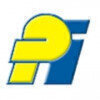
PI Industries
- Home >
- Interviews >
- Dhanuka Agritech Interview Questions >
- Dhanuka Agritech State Head Interview Questions



